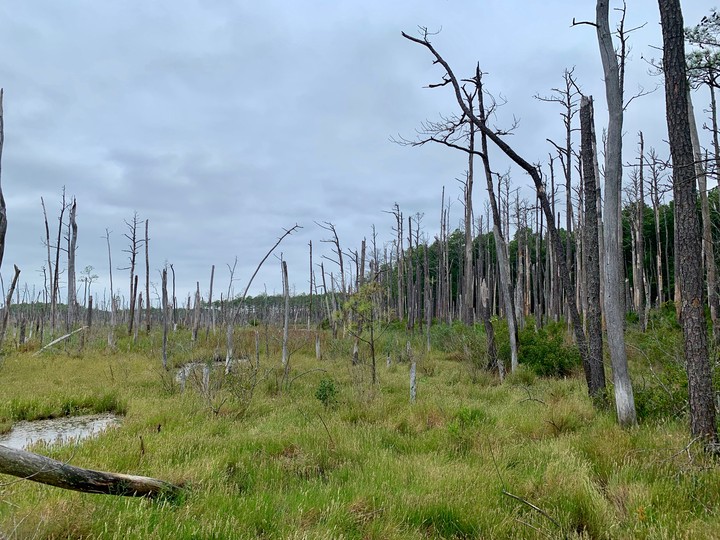Modelling the mechanisms of conifer mortality under seawater exposure

Abstract
Relative sea level rise (SLR) increasingly impacts coastal ecosystems through the formation of ghost forests. To predict the future of coastal ecosystems under SLR and changing climate, it is important to understand the physiological mechanisms underlying coastal tree mortality and to integrate this knowledge into dynamic vegetation models. We incorporate the physiological effect of salinity and hypoxia in a dynamic vegetation model in the Earth system land model, and used the model to investigate the mechanisms of mortality of conifer forests on the west and east coast sites of USA, where trees experience different form of sea water exposure. Simulations suggest similar physiological mechanisms can result in different mortality pat- terns. At the east coast site that experienced severe increases in seawater exposure, trees loose photosynthetic capacity and roots rapidly, and both storage carbon and hydraulic con- ductance decrease significantly within a year. Over time, further consumption of storage car- bon that leads to carbon starvation dominates mortality. At the west coast site that gradually exposed to seawater through SLR, hydraulic failure dominates mortality because root loss impacts on conductance are greater than the degree of storage carbon depletion. Measurements and modeling focused on understanding the physiological mechanisms of mortality is critical to reducing predictive uncertainty.